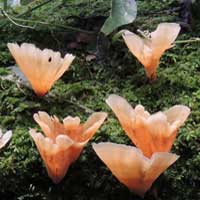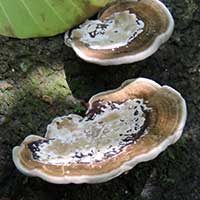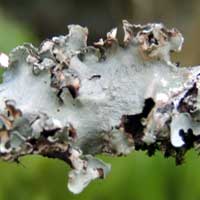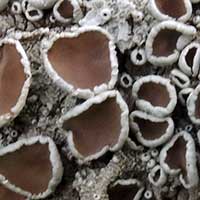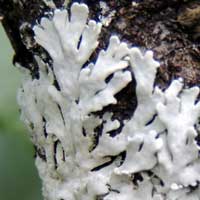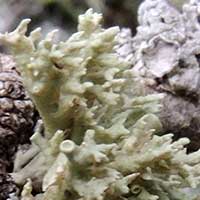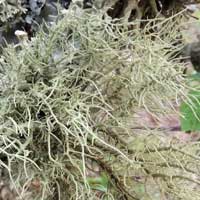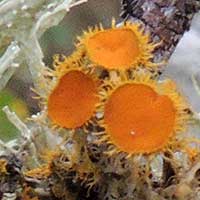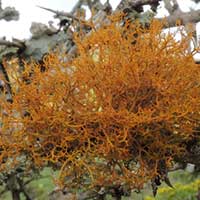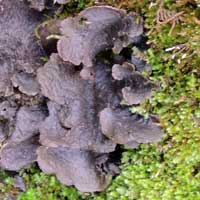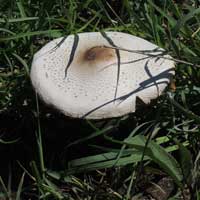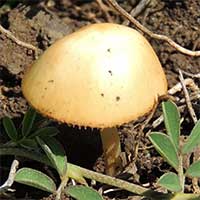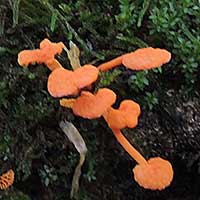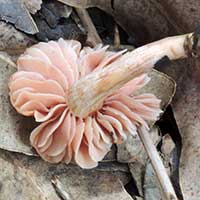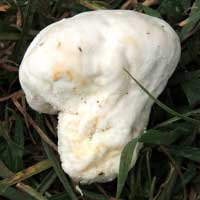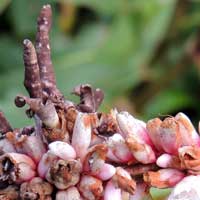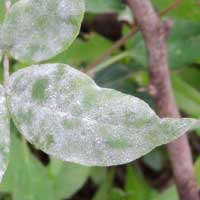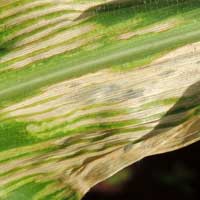Orange-colored, inverted cup. Similar to 'orange-peel' fungus. Moist, rotting log in South Nandi Forest.
Polypores form shelf-like fruiting bodies on the logs or dead standing trees where the fungus is decomposing the wood inside.
Gray-green lichen with leaf-like form and growing upon twigs of living trees in partial shade.
Saucer-shaped structures on foliose lichen are the fruiting bodies. On twigs of scrubland trees.
Gray-green lichen with finger-like lamellae epiphytic upon twigs of living trees in partial shade.
Another gray-green lichen with finger-like lamellae epiphytic upon twigs of living trees in partial shade.
Slender lichen tassels affixed to tree branches. Silvery green color.
These are the fruiting bodies or apothecia of an epiphytic lichen.
Growing epiphytically on branches of semi-deciduous scrub habitat tree.
A purple-black lichenized fungi growing on a mossy boulder at 2400 m elevation.
This wild mushrooms was found in savannna grassland. Remnants of the veil form a ring on the stalk.
Many species of wild mushrooms. No information on toxicity.
Even as this dead, fallen branch supports a dense garden of Bryophytes, fungi are converting what's left of the wood.
Pinkish cap is tilted to one side and the gills are deeply folded.
Oblong or spherical mushroom with no exposed gills. Bright white surface with slight undulations.
Inky-black spores released from swollen growths emerging from flowering spikes. A Basidiomycete plant pathogen.
Fungus appears like a dusting of white powder on leaves of Senna occidentalis. Many other types on other plants.
Pathogenic fungus on cultivated maize. Grey splotches in larger areas of brown, necrotic leaf.
